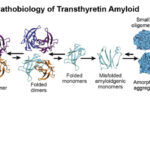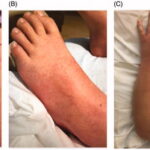Transurethral resection of the prostate (TURP) remains the gold standard surgical intervention for benign prostatic hyperplasia (BPH). Despite its efficacy, infection prevention in TURP procedures is critical, as urinary tract infections (UTIs), bacteremia, and postoperative sepsis represent significant complications. A structured infection control strategy across all phases—preoperative, intraoperative, and postoperative—can substantially reduce morbidity and improve clinical outcomes.

Preoperative Strategies for Infection Risk Reduction
Comprehensive Preoperative Assessment
- Urinalysis and Urine Culture: All patients should undergo a urine culture ideally 7–10 days before surgery. Asymptomatic bacteriuria must be treated with culture-directed antibiotics.
- Identification of Risk Factors: Patients with diabetes, chronic catheter use, or immunosuppression require closer preoperative evaluation.
Preoperative Antibiotic Prophylaxis
Empiric antibiotics are administered within 30 to 60 minutes before incision. Guidelines recommend:
- Fluoroquinolones (e.g., ciprofloxacin 500 mg PO or 400 mg IV)
- Ceftriaxone 1–2 g IV, especially in fluoroquinolone-resistant areas
- Consider local antibiograms and recent urine culture results for optimal coverage
Intraoperative Infection Control Protocols
Aseptic Surgical Environment
- Sterile equipment and closed irrigation systems are non-negotiable.
- Minimal use of cautery reduces tissue injury and potential for infection.
Minimization of Operative Time
- Limiting surgery duration to less than 90 minutes is associated with lower infection rates.
- Efficient operative technique decreases tissue trauma and post-op inflammation, which are precursors to infection.
Catheter Management
- Avoid unnecessary catheter exchanges during the procedure.
- Use silicone catheters when prolonged catheterization is anticipated.
Postoperative Infection Prevention Measures
Post-TURP Antibiotic Therapy
While a single prophylactic dose is often sufficient, postoperative antibiotics may be warranted in specific cases:
- Persistent catheterization >48 hours
- High-risk patients with comorbidities
- Evidence of surgical site contamination
Bladder Irrigation and Monitoring
- Continuous sterile saline bladder irrigation prevents clot retention, which can become a nidus for infection.
- Monitor for turbid drainage, fever, or dysuria, early signs of infection.
Early Catheter Removal
- Aim for catheter removal within 24–48 hours unless contraindicated.
- Prolonged catheterization correlates with increased risk of catheter-associated urinary tract infections (CAUTI).
Identification and Management of Postoperative Infections
Signs of Infection After TURP
- Fever >38°C
- Cloudy or foul-smelling urine
- Suprapubic discomfort or pain
- Leukocytosis or elevated CRP
Diagnostic Workflow
- Repeat urine culture and sensitivity testing
- Blood cultures in febrile or septic patients
- Ultrasound to rule out retention or abscess formation
Therapeutic Approach
- Initiate empiric broad-spectrum antibiotics pending culture results
- Tailor therapy based on pathogen susceptibility
- Consider hospital admission in immunocompromised or septic patients
Antibiotic Resistance and Stewardship
Emerging resistance patterns necessitate a tailored antibiotic approach:
- Avoid routine fluoroquinolones in high-resistance settings
- Implement hospital-specific antibiotic stewardship protocols
- Educate clinical staff on prudent antimicrobial use
Risk Factor Mitigation: Patient-Centered Considerations
Glycemic Control
- Optimize blood glucose levels preoperatively in diabetic patients to enhance immune response and reduce infection risk.
Nutritional Support
- Malnutrition impairs wound healing and immune response.
- Ensure adequate protein and micronutrient intake in the perioperative period.
Smoking Cessation
- Smoking increases risk of infection and impairs recovery.
- Encourage cessation at least 4–6 weeks before surgery.
Guidelines and Consensus Recommendations
Leading urological and infectious disease bodies, including the American Urological Association (AUA) and European Association of Urology (EAU), recommend:
- Routine preoperative urine screening
- Risk-adjusted antibiotic selection
- Limiting postoperative antibiotic duration to avoid resistance
- Enhanced recovery protocols to reduce hospital stay and nosocomial infections
Frequently Asked Questions:
What is the primary cause of infection after TURP?
The most common cause is bacterial contamination from endogenous urogenital flora or unrecognized bacteriuria before surgery.
Are antibiotics always required after TURP?
Not always. Single-dose prophylaxis is usually sufficient unless risk factors necessitate extended coverage.
How long should the catheter remain post-TURP?
Ideally, the catheter should be removed within 24–48 hours to reduce the risk of infection.
Can TURP infections be fatal?
Severe infections like urosepsis can be life-threatening if not recognized and treated early.
How can hospitals minimize infection rates after TURP?
Implement standardized infection control protocols, surgical training, antibiotic stewardship, and enhanced recovery pathways.
Effective infection prevention in transurethral prostatectomy is a cornerstone of patient safety and surgical success. Through meticulous preoperative screening, judicious antibiotic use, sterile surgical practices, and vigilant postoperative monitoring, we can dramatically reduce the incidence of UTIs, bacteremia, and other complications. Continuous review of local resistance patterns and adherence to evolving clinical guidelines ensures optimal outcomes for all TURP patients.

